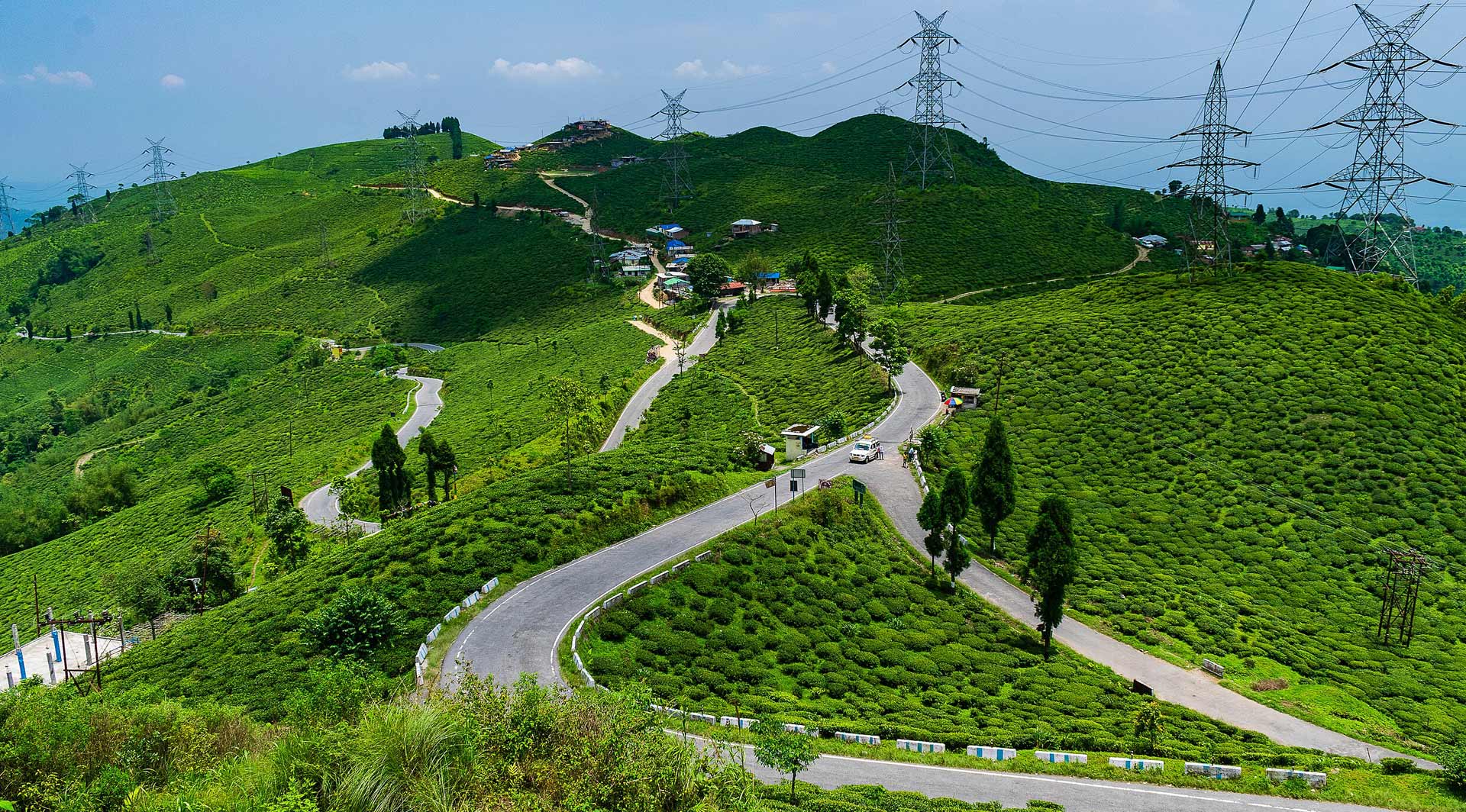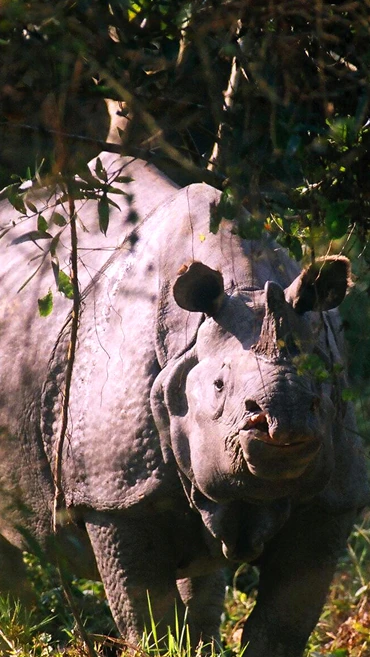Mirik Complete Tourism Guide
Nestled in the Darjeeling district of West Bengal, Mirik stands as a tranquil alternative to its bustling neighbour, Darjeeling. While travellers flock to Darjeeling's tea estates, Mirik remains relatively untouched —a serene paradise where the magnificent Kanchenjunga Peak watches over a pristine lake and rolling tea gardens. This quaint hill station offers a blend of natural beauty, adventure, and cultural experiences.
The History and Landscape of Mirik
The name "Mirik" has its origins in the Lepcha words "Mir-Yok," meaning "place burnt by fire." According to local legends, a massive fire once swept through this region, clearing the land for what would later become the centrepiece of this charming town— the beautiful Sumendu Lake. Perched at an altitude of approximately 4,900 feet above sea level, Mirik enjoys a refreshingly cool climate throughout the year, making it an ideal escape from the sweltering plains of India.
The town is surrounded by tea gardens that act as a green shield, dense pine forests that release refreshing aromas, and orange orchards that add bursts of colour to the landscape. The majestic Kanchenjunga frequently peeks through the clouds, adding a touch of grandeur to a spectacular panorama.
The town has been attracting visitors since the British colonial era, though it remains less explored compared to other hill stations in the region. This lesser-known status is precisely what makes Mirik special—you can enjoy all the beauty of the Eastern Himalayas without the crowds that characterise more popular destinations.
Orientation: Understanding Mirik's Layout
The Sumendu Lake forms the heart of the town, with different areas surrounding it offering varied experiences.
The southern section of the lake houses the tourism district, where most hotels and tourist facilities are concentrated. This area caters specifically to visitors and offers comfortable accommodation options with lake views.
In contrast, the northern part of Mirik has a more authentic local atmosphere. At the northernmost edge lies the bustling Mirik market, which can get crowded with both locals and visitors. This area experiences more traffic congestion as it serves as a commercial hub for residents. However, venture just beyond this market area, and you'll discover another side of Mirik—quiet, non-touristy, and serene. This northern region beyond the market is where you'll find most of the homestays and lodges that offer unique experiences for travellers.
The eastern fringe of the lake features the main road connecting Siliguri to Darjeeling, which serves as the primary transportation artery. Essential services like government offices, the police station, the post office, and the renowned Mirik monastery are situated along this road or in its vicinity. This strategic location makes it easy to access important services while enjoying the natural beauty of the surroundings.
Getting to Mirik: Transportation Options
Bagdogra Airport, located approximately 52 kilometres (1.5 hours) away, serves as the nearest air connection. For those travelling by train, the New Jalpaiguri (NJP) railway station in Siliguri lies about 49-60 kilometres from Mirik and is well-connected to major cities across India.
For travellers already in Darjeeling, Mirik makes for an excellent day trip or a worthwhile detour. The distance between Darjeeling and Mirik is approximately 45 kilometres, which translates to a journey of about one and a half hours each way without traffic. Many tourists choose to visit Mirik while travelling between Darjeeling and Bagdogra/NJP, as it adds only about 30 additional kilometres to the journey. This slight detour is well worth it, as the route offers more picturesque views than the direct path. You can travel from Darjeeling to Mirik, spend a few hours exploring the town, and then continue to Bagdogra or NJP for your departure. Alternatively, you can make Mirik your first stop after arriving at Bagdogra or NJP before heading to Darjeeling.
Best Time to Visit Mirik: Season Guide
Mirik's relatively moderate altitude of 4,900 feet provides it with a pleasant climate throughout the year.
Spring (March to May) brings mild temperatures and blooming flowers, creating a vibrant and colourful landscape. The weather remains pleasant, with daytime temperatures averaging between 18°C and 26°C. In May sometimes the temperature may increase occasionally.
The monsoon season (June to August) transforms Mirik into a lush green paradise. However, this season also brings challenges, such as occasional landslides and foggy conditions that may limit visibility. If you don't mind occasional showers and are primarily interested in experiencing the lushness of the hills, monsoon can be a rewarding time to visit.
In Autumn (September to November), the skies are clear, temperatures are comfortable (ranging from 12°C to 20°C), and the visibility of mountain ranges is excellent. The post-monsoon landscape remains green while offering stable weather conditions, making it perfect for photography and outdoor activities.
Winter (December to February) brings a different charm, with temperatures occasionally dropping well below 10 degrees, especially at night. Daytime temperatures typically range from 7°C to 15°C.
Major Attractions in Mirik: Must-Visit Places for Every Traveller
Sumendu Lake: The Heart of Mirik
The crown jewel of Mirik, Sumendu Lake (often called Mirik Lake), is a man-made marvel that serves as the town's centrepiece. Constructed in the late 1970s to boost tourism, this 1.25-kilometre-long lake is surrounded by forested hills and tea gardens, creating a picturesque setting that captivates visitors. The lake features a charming 80-foot arch-type footbridge that not only serves as a crossing but also as a perfect spot for photography, with the lake and mountains as a backdrop.
Boating on Sumendu Lake ranks among the most popular activities in Mirik. Paddle boats are available for rent, allowing visitors to explore the tranquil waters while enjoying panoramic views of the surrounding landscape. On clear days, you might even catch glimpses of the Kanchenjunga peak reflected in the lake's mirror-like surface. A floating fountain in the middle of the lake adds to its charm, especially when illuminated in the evening.
A paved path encircles the lake, offering a leisurely walking trail that's approximately 3.5 kilometres long. This pathway is ideal for morning and evening strolls, allowing visitors to experience the changing moods of the lake throughout the day. Horse rides are also available on the open ground near the lake, providing an alternative way to enjoy the scenery, especially for families with children.
Bokar Monastery
The Bokar Ngedon Chokhor Ling Monastery, commonly known as the Mirik Monastery or simply "Gomba" by locals, represents an important spiritual centre in the region. Located a few kilometres from Sumendu Lake, this monastery is home to Mahayana monks and attracts both devotees and tourists seeking spiritual blessings.
The monastery's architecture features colourful Tibetan designs, prayer flags, and intricate artwork that reflect the region's Buddhist heritage. Inside, you'll find beautiful murals, statues of Buddhist deities, and religious artefacts that offer insights into Tibetan Buddhism. The serene atmosphere of the monastery provides a perfect setting for meditation and reflection, allowing visitors to experience a moment of peace amidst their travels.
Beyond its spiritual significance, the monastery also serves as one of the best viewpoints in Mirik. From its elevated position, visitors can enjoy panoramic views of the surrounding hills, tea gardens, and distant mountain ranges. The combination of spiritual ambience and natural beauty makes Bokar Monastery a must-visit destination in Mirik.
Viewpoints
Mirik boasts several viewpoints that offer breathtaking panoramas of the surrounding landscapes. These locations provide perfect settings for photography and quiet contemplation of nature's grandeur.
Kawlay Dara Viewpoint, also known as the Soureni Viewpoint or Ting Ling Viewpoint, is situated approximately 8 kilometres from Mirik on the Siliguri-Mirik main road. This viewpoint is positioned at the intersection of Soureni, Ting Ling, and Phaguri tea gardens, offering spectacular views of the rolling tea plantations that have made Darjeeling famous worldwide. Many iconic photographs of Darjeeling tea gardens are captured from this vantage point. The location is particularly magical during sunrise and sunset, when the golden light bathes the tea gardens in warm hues.
Deosi Dara serves as another remarkable viewpoint in Mirik, offering panoramic views of the plains, hills, and peaks surrounding the town. The "soul-stimulating sight of nature," as locals describe it, draws numerous visitors seeking to capture the essence of the Himalayan foothills. The vast expanse visible from this point helps visitors appreciate the grand scale of the landscape that embraces Mirik.
Rameetay Dara has earned a reputation as an ideal location for witnessing both sunrise and sunset. From this vantage point, visitors can also enjoy views of the River Teesta meandering through the valley below. The changing colours of the sky reflected on the river create a mesmerising spectacle that photographers and nature enthusiasts will appreciate.
The Mirik Helipad, perched atop a hill about 2 kilometres from the lake area, offers perhaps the most comprehensive view of Mirik. From this elevated platform, visitors can observe the entire stretch of Sumendu Lake, the town, and areas beyond, including parts of neighbouring Nepal and the distant Kanchenjunga range. A 15-minute walk from the main tourist area takes you to this excellent vantage point, which is more frequently used for sightseeing than for actual helicopter landings.
Tea Gardens
The tea gardens surrounding Mirik form an essential part of its charm and identity. These meticulously maintained plantations create a "green shield" around the town, enhancing its aesthetic appeal while contributing to the local economy. The undulating terrain covered with neat rows of tea bushes creates patterns that are as pleasing to the eye as they are photogenic.
The tea gardens are particularly stunning during the early morning hours when the mist hovers over the plantations, creating an ethereal atmosphere. Photography enthusiasts will find endless opportunities to capture the beauty of these landscapes, especially when golden sunlight filters through the morning fog.
As you approach Mirik from the plains, you will come across many tea gardens. In the plains, you will come across Panighata and Long View tea gardens. As you start climbing the hills, Phuguri and Singbull tea gardens will greet you. Further North of Mirik are tea gardens such as Okaity and Gopaldhara. The tea garden view in this route is arguably even better than what you can expect near Darjeeling town.
Authentic Homestays and Alternative Accommodations
Beyond the conventional hotel zone, Mirik offers a range of alternative accommodations that provide more authentic and immersive experiences. These options are primarily located north of the market area, where the atmosphere transitions from touristy to genuinely local. Mirik has been a pioneer in alternative accommodation and experiential travel, with the first homestay established here in the early 1980s.
The Humro Home initiative connects visitors with authentic, alternative accommodations in the Mirik area. This platform helps travellers find and book homestays, eco-lodges, and other unique lodging options that might otherwise be difficult to discover. Through Humro Home or similar services, visitors can arrange stays that align with their preferences for authenticity, comfort level, and desired experiences.
To talk to the Humro Home team, or 9733071716 / 9733069690
If you wish further support for a visit to Mirik, feel free to call 9733300696
For Booking or Query
Contact Us
Query Form
North-Bengal.com
Siliguri Office - 19 MN Sarkar Road, Siliguri, West Bengal - 734001 Siliguri, State : West Bengal, Country : India. PIN : 734001
info@north-bengal.com

